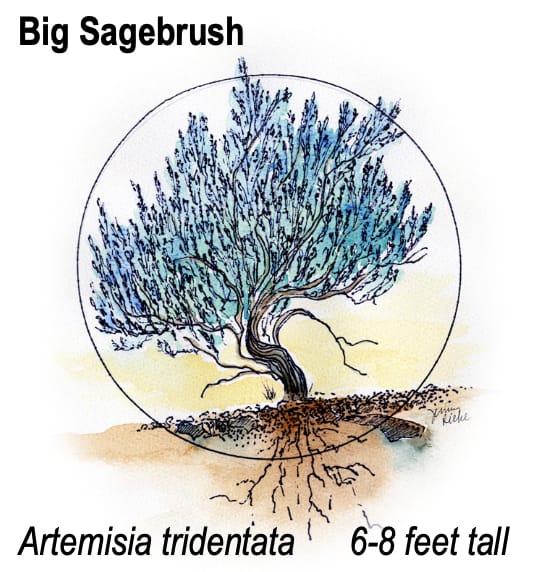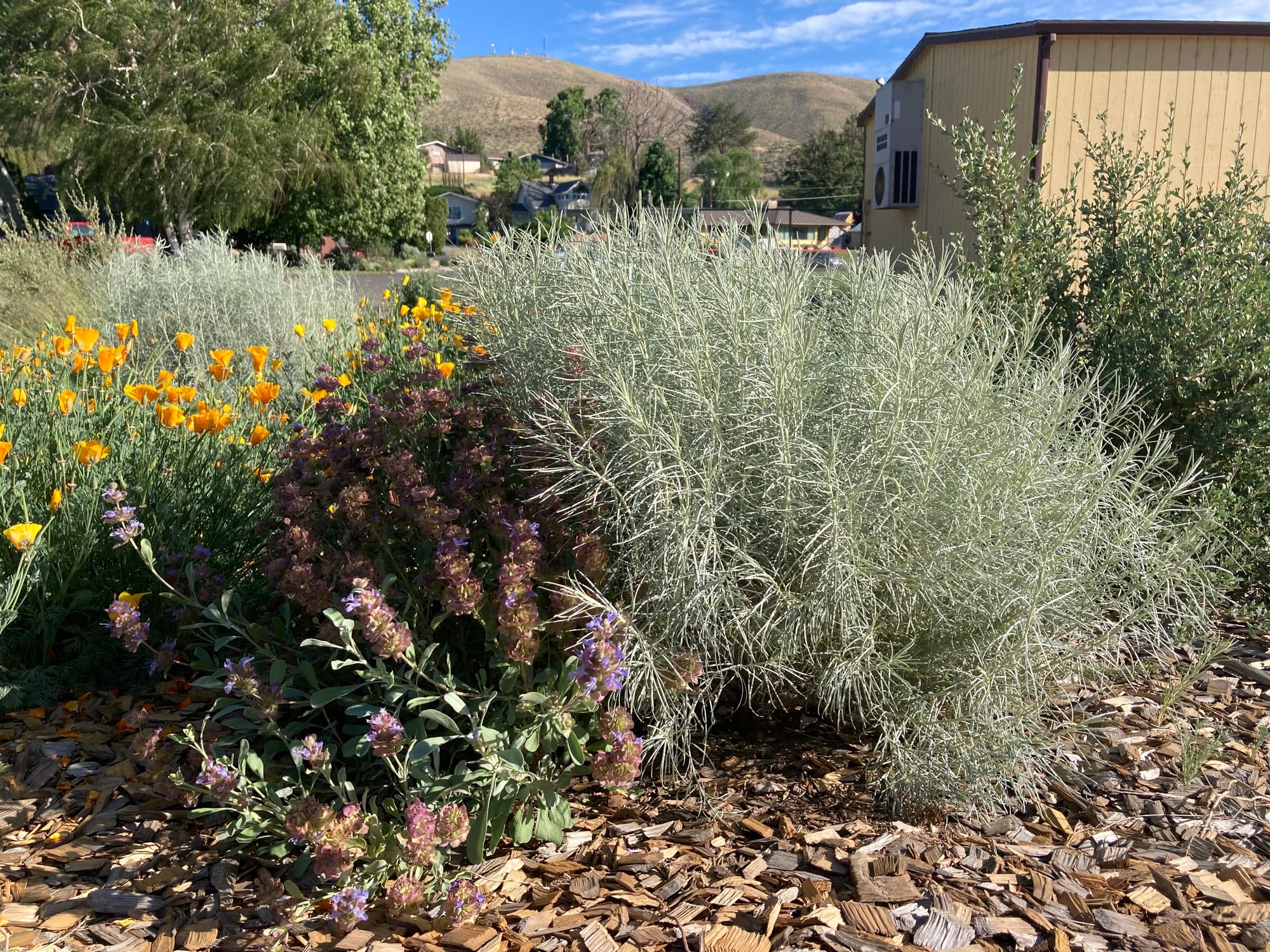Prosser School District native plant garden / Mikki Symonds
Two years ago a couple of friends and I planted purple sage, gray rabbitbrush, snow buckwheat, blanket flower, and sunset hyssop in a school district plot that had been covered in rocks for years.
Today, the plot is blooming with bright yellow, red, and purple blossoms and humming with insects. Stepping into the Prosser School District office, I was recently greeted by smiles, questions about how to acquire native plants, and, “I just love driving by the garden you planted!” Imagine the animated conversation we had talking about how beautiful snow buckwheat blossoms glow yellow in the sun.
Their native plant inquiry led to a multi-layered conversation. I was able to share about the Conservation District’s Heritage Garden Program, describing how they will visit a person’s home for a free consultation about siting, preparation, watering, and where to obtain plants. This led me to confess that I’d lived nearly 20 years surrounded by a brown or gray-green landscape that sustained my family — without really seeing the beauty of it. I hadn’t known a single native plant’s common name beyond ‘sage’ (which I learned only because the aroma was what made me think I could live here when we came for my husband’s job interview.) I’d since learned that the landscaping industry in Washington state, along with Florida, utilizes the fewest native plants in the country. I felt as if our native plants had somehow been demoted in importance, erased from our vision and imagination.

Hiking in this area instead of a national park during the COVID-19 pandemic, and learning about native plants with our youngest — who is graduating from UW this year with a degree in landscaping — finally allowed me to begin experiencing the shrub steppe. By now, I can spot over a dozen native plants. I even wear the tag Artemesia tridendata on a necklace and know that it is our keystone species.
Now, I experience the place where I live, and through planting natives, removing invasive species on various properties (and on Badger and Candy Mountains with Friends of Badger Mountain), and learning more about the shrub steppe, I am deepening my relationship with this place. In addition to very real and necessary human relationships, I now live with this land — seeing it and allowing it to teach me how to be with it.
The beauty of native plants speaks volumes; we humans need to cultivate them where people can experience their beneficial role in our ecosystem, how they bring healing to everyone — humans, birds, native bees, larger fauna, biotic crust, water. A friend who helped plant the eye-catching garden in Prosser has called the native plants “ambassadors.” Let us be creative and courageous and have fun in bringing our plant ambassadors to the attention of more people.
Where do you see good places for a few native species? Who can help us tend the sites? The more we make space for them, the more they make place for us: they literally ground us in the place we live and open our eyes to unique beauty and our role in a flourishing landscape.
Mikki Symonds is with the Columbia Basin Chapter of the Washington Native Plant Society.

